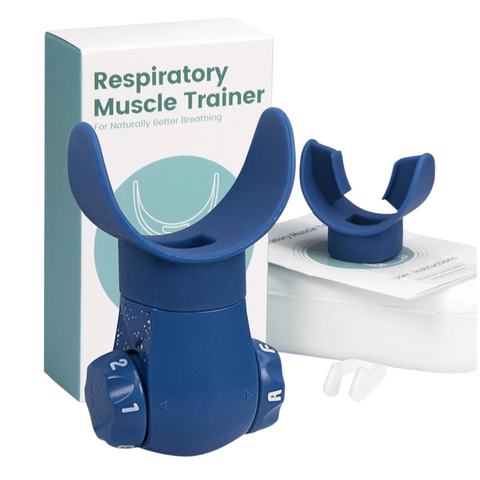Our CEO Dr. Mike Wasilisin recently spent time with his 73-year-old aunt Vicky, an avid swimmer, who shared she felt a decrease in her lung capacity while swimming. Vicky found herself needing to breathe more frequently and felt the urge to take in air earlier than normal. As a competitive swimmer, Vicky competes at a high level, so she sought out Dr. Mike’s help as he’s a seasoned free-diver.
Dr. Mike’s breath training 101 plan on how to increase lung capacity is shared below. Whether you're a swimmer, diver, or fitness enthusiast, this breath-work plan will help elevate your energy level, strengthen your core, and optimize your performance and recovery. Learn all about it below!

What Are the Benefits of Increased Lung Capacity?
To be healthy, our bodies need to learn to retain oxygen. To function at an optimal level, it’s important to have good lung capacity. If you’re an athlete, such as a free-diver or swimmer, you need to learn how to increase the amount of oxygen in your body to be able to perform.
The benefits of increased lung capacity include the following:
- Stronger respiratory muscles.
- Improved lung function.
- Ability to perform at a more optimal level.
- Increased oxygen to your muscles.
- Improved stamina and endurance.
Breath-work Technique to Increase Lung Capacity
Get the breath-work basics right with this breath-work training technique to increase lung capacity:
- Start with a full belly breath, inhale to fill up.
- Expand your lungs fully.
- Control your exhale using your deep core muscles.
Spend 2 to 3 weeks improving and honing these techniques inside of the Back & Core Program in the MoveU Membership. Print out the training manual and complete Back & Core Week 1, Level 1 & 2 for additional support.
Daily Lung and Diaphragm Warm-Ups
Here are some warm-up breath-work exercises to try to help increase your diaphragm’s flexibility, thereby increasing your inspiratory volume and boosting your muscle strength. Remember to aim for mobility and strength here.
Daily lung and diaphragm warm-up routine videos:
While practicing, use a breath training device (as shown below). Initially, set both inhale and exhale resistances to the easiest levels and gradually increase resistance. Aim for full inhales and complete exhales.

Apnea or Breath Hold Training
Apnea training is used to help with breath holds, which makes it key for any sport where you need to hold your breath like free-diving and swimming. It’s important to focus on amplifying oxygen volume and CO2 tolerance here. Alternate between O2 and CO2 training days. Here's a head start on how to do breath holds with some useful links:
- O2 Training - Beginner to Intermediate
- CO2 Training - Beginner | Intermediate
For a structured approach, we recommend the Freedive Apnea Timer app.

Complementary Breathwork
If you’re looking for additional complementary breath-work techniques, we highly recommend checking out Wim Hof. (Our CEO Dr. Mike and CMO Katie traveled to Poland to train with Wim Hof himself recently!) The first pillar of the Wim Hof Method is breathing and harnessing the benefits of heightened oxygen levels. The second pillar is cold exposure, and the third pillar is commitment.
You can learn more about his approach online and explore deeper with the Wim Hof App.
Remember, consistency is key! Integrating these exercises into your daily routine can revamp your respiratory capabilities. Always prioritize comfort and progress steadily.
Stay buoyant and breathe easy! Join our MoveU membership to learn more!



